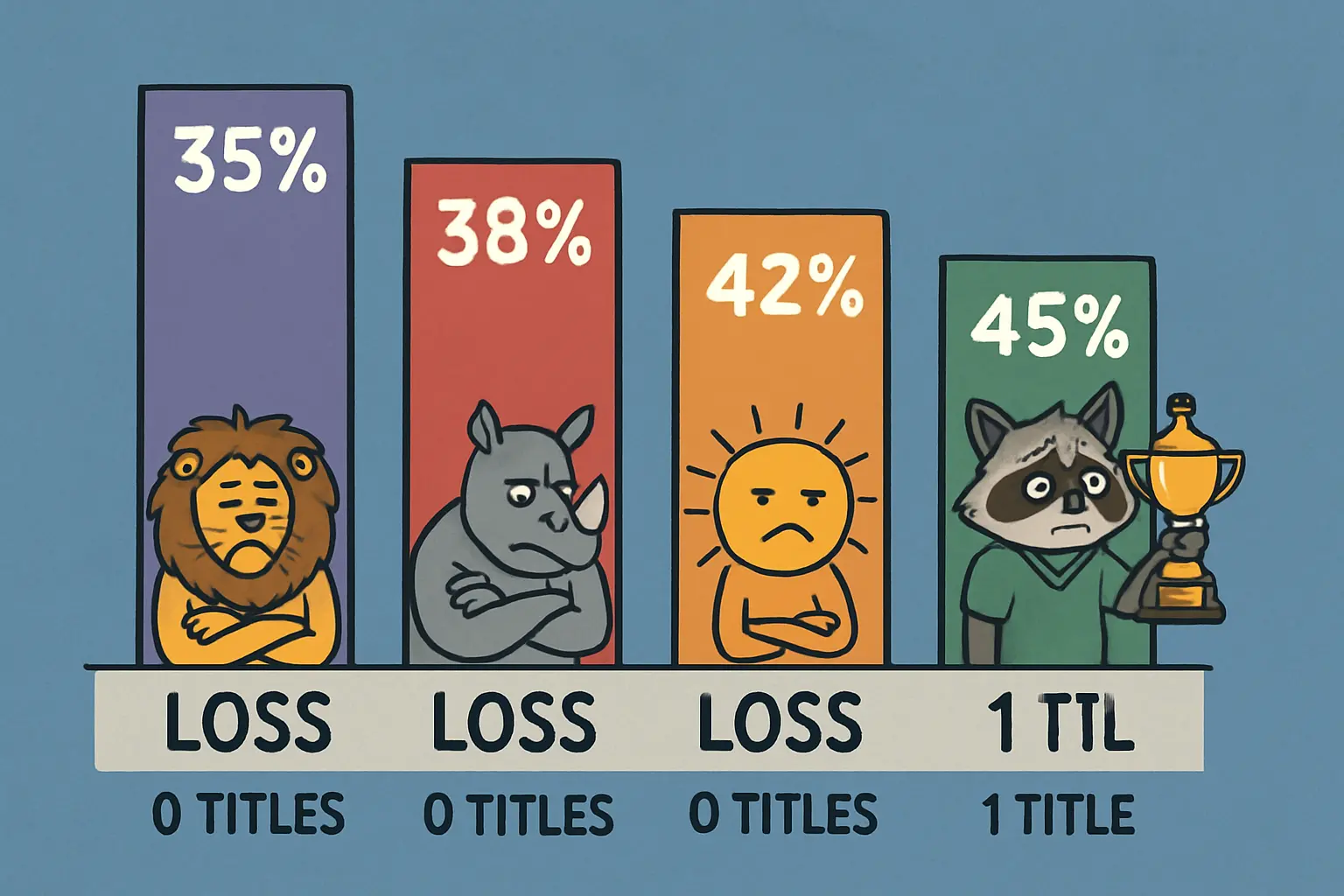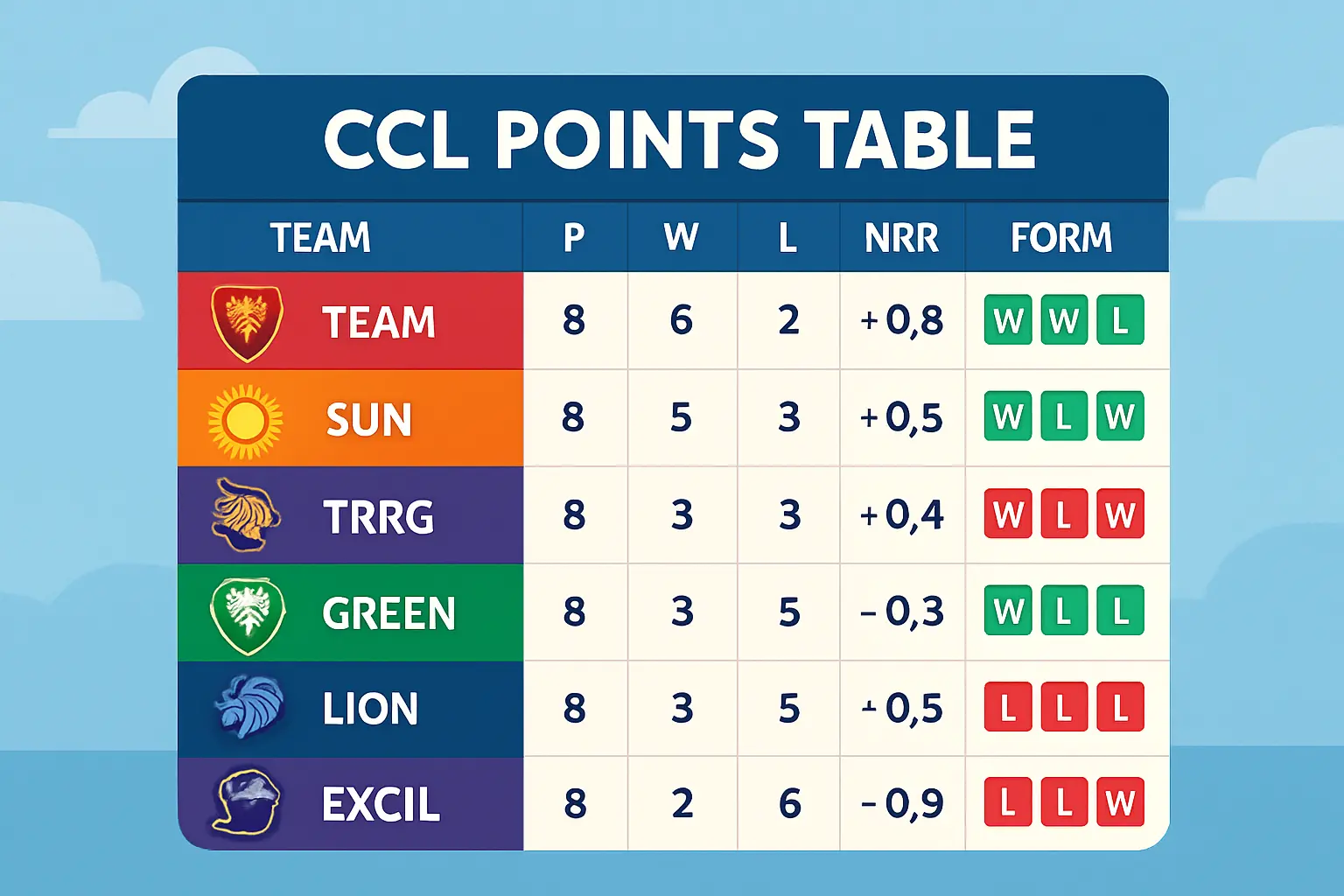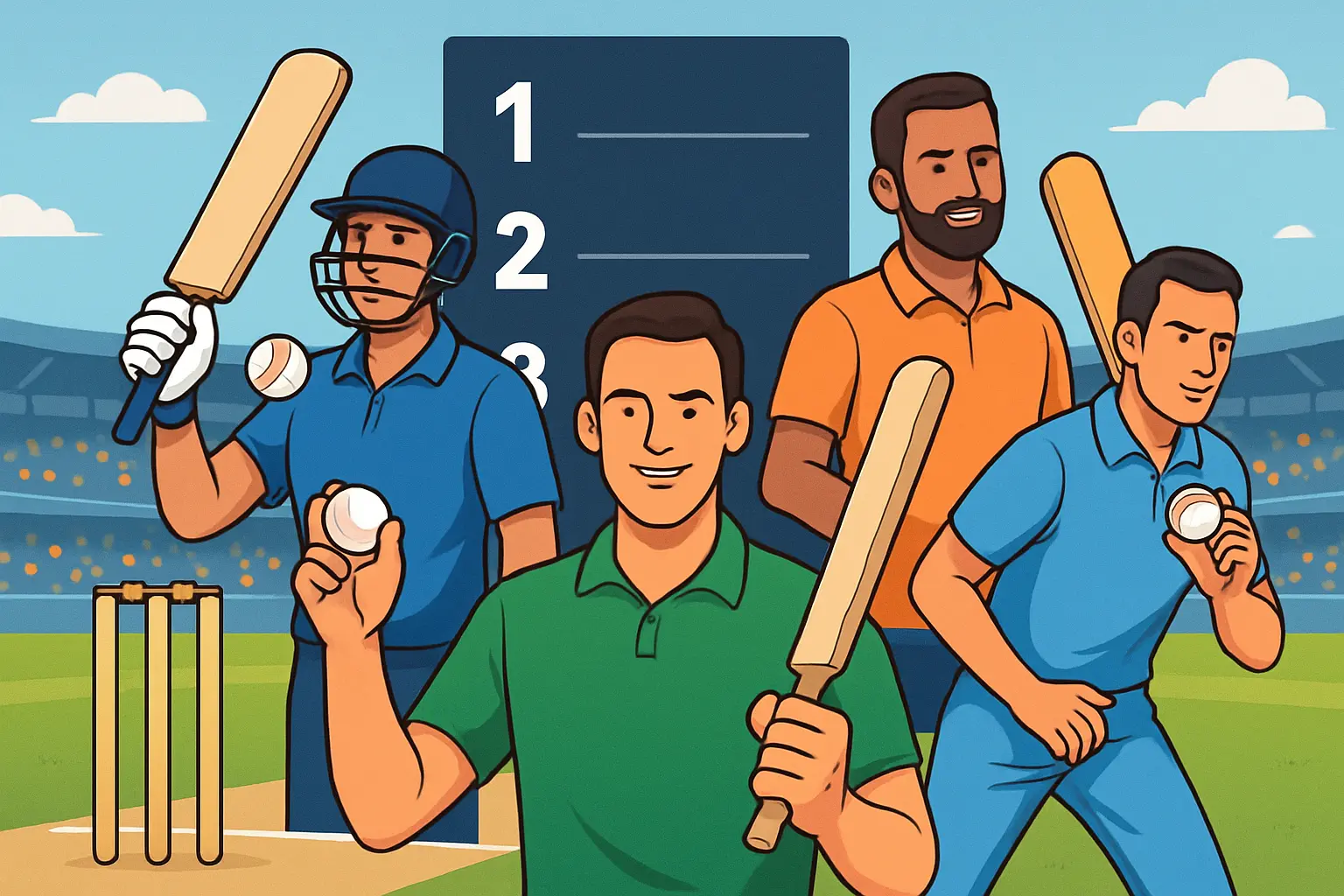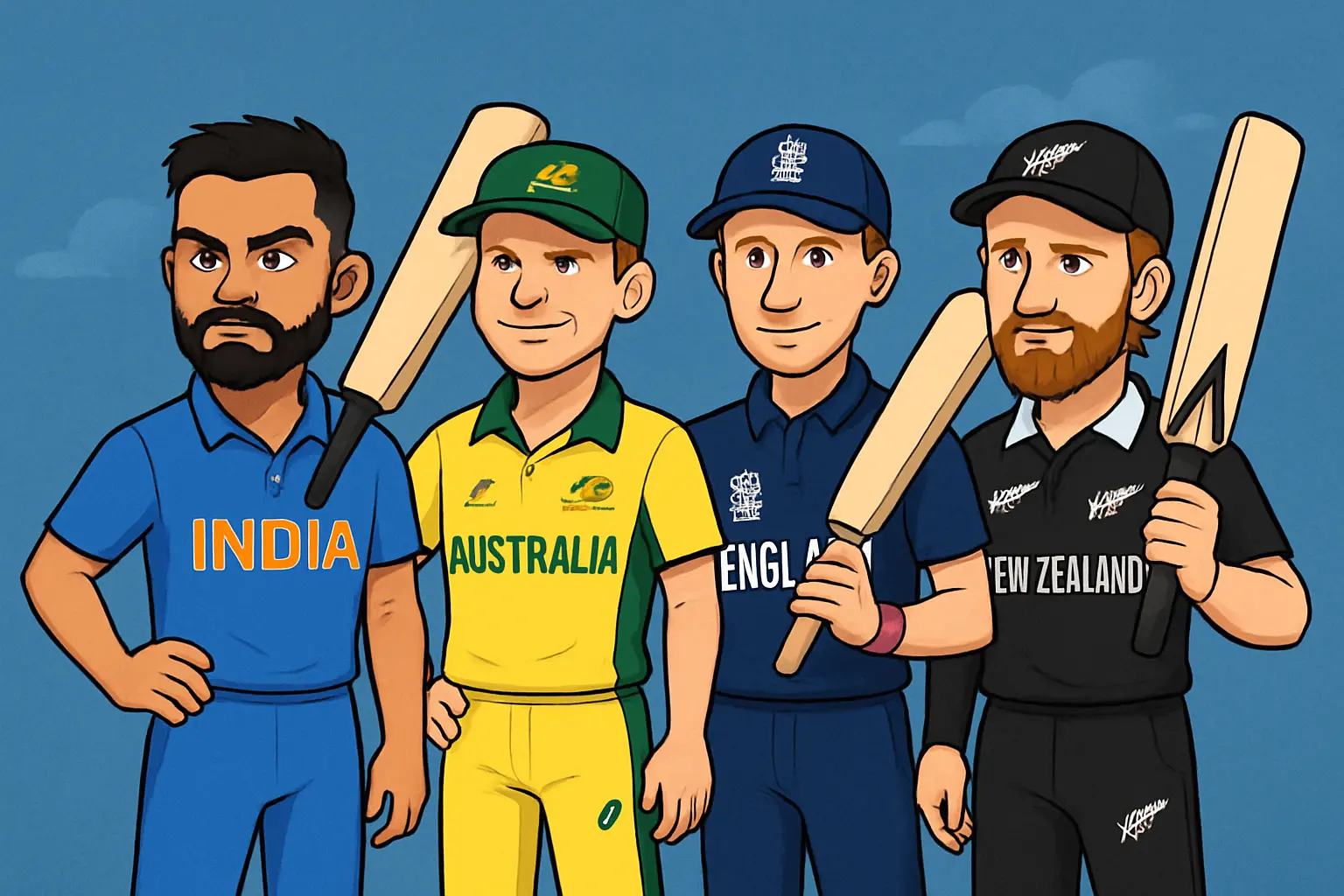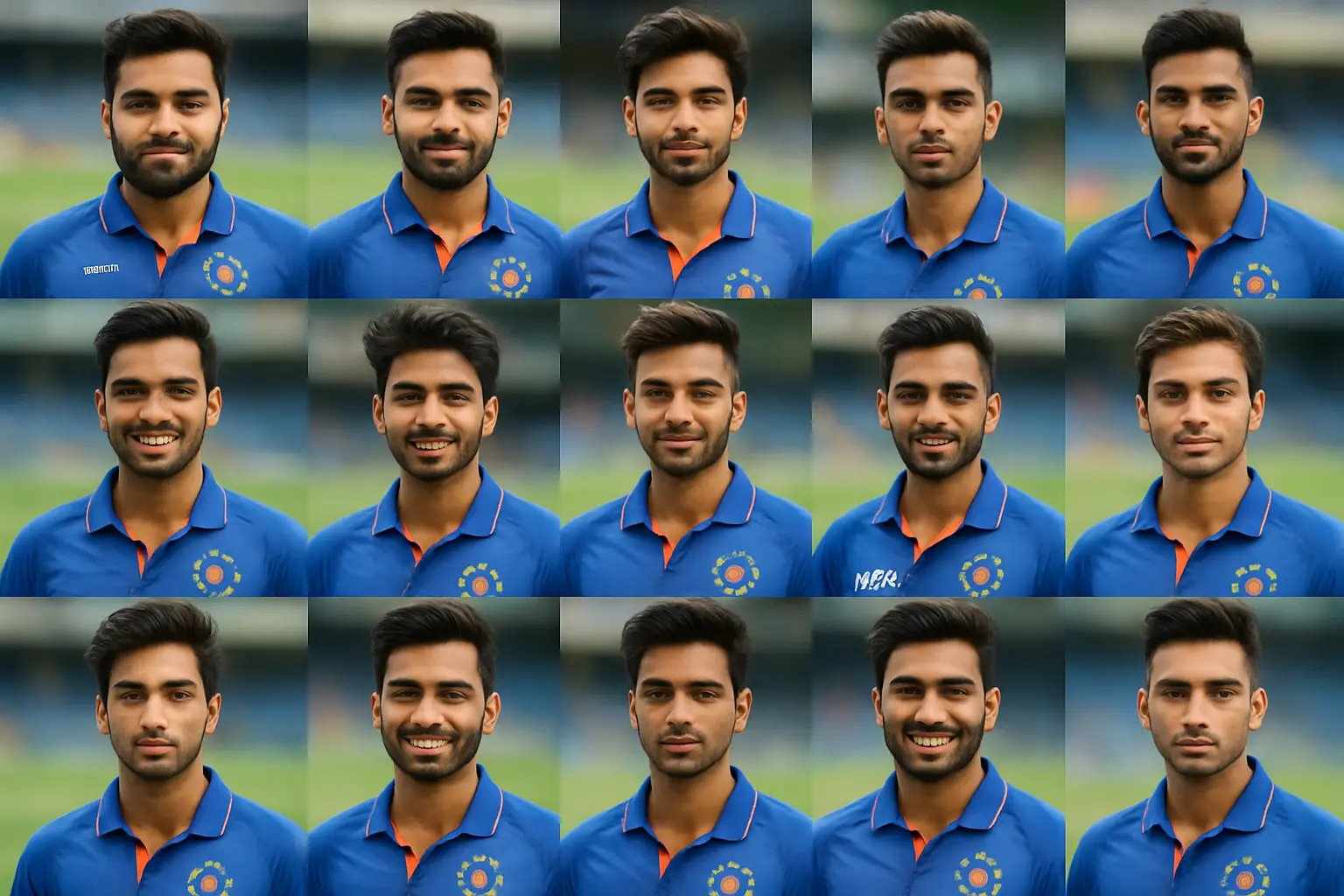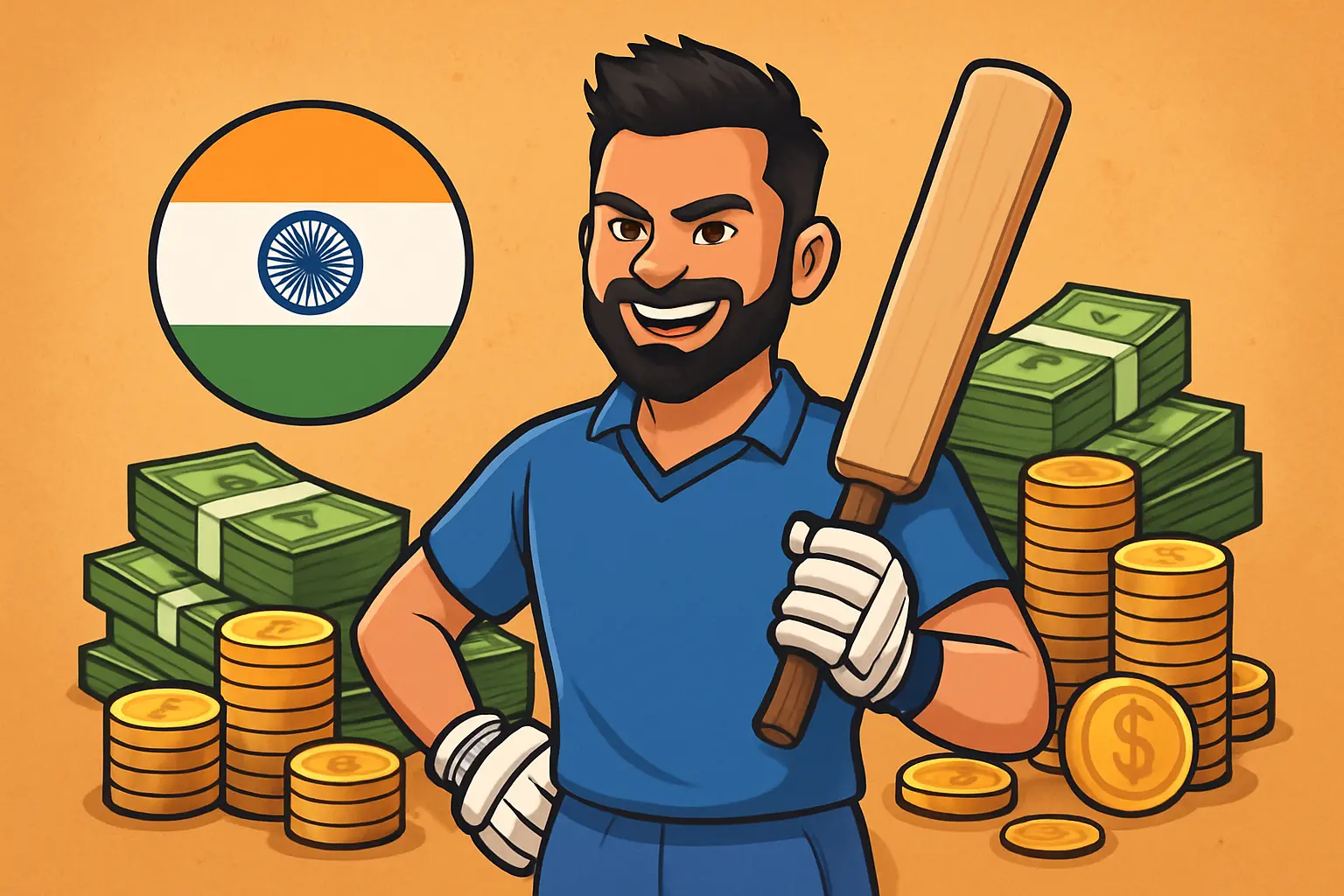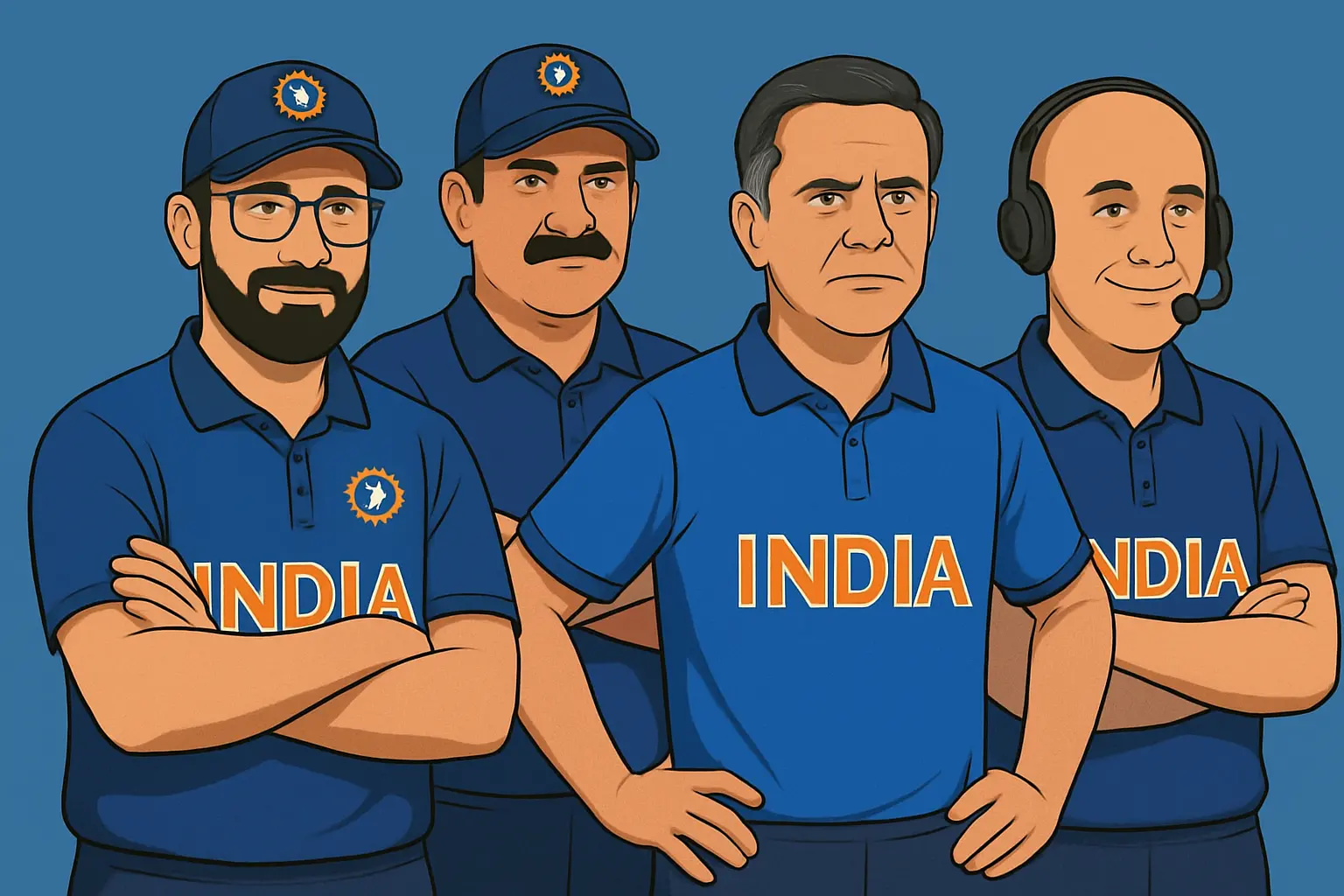Introduction: what “unsuccessful” really means in the IPL
In a league that compresses hope, money, and mathematics into a frantic burst of matches, success isn’t a single trophy on a single night. It’s a pattern that shows up over seasons: win percentage, last-place finishes, total losses, playoff misses, and the kind of decision-making that keeps repeating its mistakes. When fans search for the most unsuccessful IPL team or the worst IPL team in history, they’re asking for a picture that’s broader than one final. They’re asking for a ledger of habits.
This analysis blends numbers and on-ground nuance. It references official IPL scorecards and ESPNCricinfo’s StatsGuru database, and it leans on the lived realities of auction tables, captaincy churn, and how teams actually win in Indian conditions. The goal is simple: define “unsuccessful” from multiple angles, rank teams by each lens, and explain why those patterns keep recurring.
Quick answer, then the deeper cut
If you want the one-minute answer:
- Among active franchises, the least successful IPL teams by overall record are typically Delhi Capitals and Punjab Kings, who sit at or near the bottom for all-time win percentage and have piled up frequent playoff misses and several last-place finishes.
- Royal Challengers Bangalore are often labelled the most unsuccessful IPL team by fans because they carry a heavy tally of total losses and still haven’t lifted the trophy, despite reaching title deciders.
- Teams without an IPL title among current franchises: Royal Challengers Bangalore, Delhi Capitals, Punjab Kings, Lucknow Super Giants.
- The lowest long-term win rates among active teams are generally held by Punjab Kings and Delhi Capitals, with RCB next in line.
- No team has ever gone winless across an entire season.
Teams without the trophy today (active franchises)
- Royal Challengers Bangalore (RCB)
- Delhi Capitals (DC)
- Punjab Kings (PBKS)
- Lucknow Super Giants (LSG)
Snapshot definitions: how this ranking works
There is no single “most unsuccessful franchise in IPL” without context. Here’s how we measure:
- All-time win percentage: proportion of wins across total matches. A reliable measure of baseline performance.
- Total losses: the raw count of lost matches, useful for understanding the long arc (this is influenced by longevity).
- Last-place finishes: the wooden spoon factor; a sign of poor seasons and inconsistency.
- Playoff misses: how often the team wasn’t even in the qualifying conversation.
- Title drought: either never won a title or a long run without one.
- Streaks: most consecutive losses; worst net run rate seasons; lowest points tallies.
All metrics are subject to ongoing updates during the current season. The exact order may shift depending on the week, but the long-term picture rarely changes drastically.
By the numbers: rankings across different lenses
A. Lowest all-time win percentage (active franchises)
Among active teams, the “lowest win percentage in IPL team” conversation typically centers on two names: Delhi Capitals and Punjab Kings. RCB sits above both in percentage terms, even if the no-trophy tag sticks more stubbornly to Bengaluru because of expectation versus return and cumulative losses.
Indicative ranking by win% (active, long-term snapshot)
- Punjab Kings — among the lowest win percentages
- Delhi Capitals — also among the lowest
- Royal Challengers Bangalore — below 50% historically, but above the two above
- Rajasthan Royals — borderline around the 50% line across the long arc
- Sunrisers Hyderabad — slightly above midline
- Kolkata Knight Riders — above midline
- Lucknow Super Giants — positive win rate in a smaller sample
- Mumbai Indians — upper tier by win%
- Chennai Super Kings — upper tier by win%
- Gujarat Titans — excellent early sample
Notes:
- Among defunct sides, Pune Warriors India sit near the bottom historically by win percentage.
- Kochi Tuskers Kerala and Gujarat Lions had short lives and mid-table records.
- Deccan Chargers closed their run with a low-middling win rate despite a title.
B. Most total losses in IPL history (all franchises)
Total losses can be misleading without context because older franchises have played far more matches. Still, it’s a powerful indicator of how often a team leaves the field empty-handed. Royal Challengers Bangalore, Delhi Capitals, and Punjab Kings have historically carried the heaviest loss tallies for active teams.
Indicative top tier by total losses (active, long-term snapshot)
- Royal Challengers Bangalore — highest or among the highest total losses
- Delhi Capitals — among the highest
- Punjab Kings — among the highest
C. Most last-place finishes (wooden spoons)
Nothing screams “rough season” like propping up the table. Delhi Capitals have led the league in wooden spoons across their history, with Punjab Kings and a couple of other franchises not far behind. RCB have fewer last-place finishes but their near-seasonal volatility has produced dramatic swings, especially when death bowling fails.
Indicative ranking for last-place finishes (active, long-term snapshot)
- Delhi Capitals — most wooden spoons among active franchises
- Punjab Kings — among the most last-place finishes
- Royal Challengers Bangalore and Sunrisers Hyderabad — multiple last-place finishes across different eras
D. Longest title droughts; teams without a trophy
- Never won: Royal Challengers Bangalore, Delhi Capitals, Punjab Kings, Lucknow Super Giants
- Among historic, now-defunct teams without a title: Pune Warriors India, Kochi Tuskers Kerala, Gujarat Lions, Rising Pune Supergiant
RCB’s drought is the most iconic because of their profile: star-laden squads, marquee captains, a home ground that creates a fireworks show—and an unforgiving lens on the bowling. Delhi’s drought is the most frustrating because several rebuilds looked coherent, then crumbled. Punjab’s drought feels like a carousel of restarts and new ideas that often didn’t last a full season cycle. LSG are too new to be judged harshly, but the label still applies: no trophy yet.
E. Most playoff misses in IPL
Delhi Capitals and Punjab Kings share a reputation for regularly missing the business end. RCB’s misses are also frequent despite reaching the knockouts multiple times. The best summary: DC and PBKS have the longest habit of being outside the conversation when April turns to crunch time, while RCB tends to be feast or famine.
Indicative picture for playoff misses (active, long-term snapshot)
- Delhi Capitals — among the most seasons without playoffs
- Punjab Kings — among the most seasons without playoffs
- Royal Challengers Bangalore — many misses despite periodic surges
F. Most consecutive losses in IPL
The record for most consecutive losses sits in double digits. Delhi and Pune Warriors India share the notoriety here: multi-match skids that stretched painfully across seasons. It’s the kind of streak that breaks dressing rooms and can trigger sweeping changes in coaching, captaincy, and scouting.
G. Worst net run rate seasons and lowest points tallies
The harshest NRR crashes often belong to struggling Delhi and Pune Warriors campaigns, and to a couple of Punjab seasons where big losses late in the league stage shredded any faint fourth-place hopes. The lowest points tallies on record sit at the 4-point mark for multiple teams in especially dire runs. No team has ever finished with zero wins.
The case studies: why certain franchises struggle
Royal Challengers Bangalore: high-octane batting, low-margin bowling
The RCB paradox is cricket’s most watched riddle. They have the brand, the big-ticket batters, and the league’s loudest home ground, and yet the no-title tag refuses to budge. If you dissect their losses, patterns repeat.
- Auction allocation: top-heavy batting
RCB have often concentrated budget on premium top-order runs. They consistently win the first ten overs with the bat at the Chinnaswamy. Post-timeout, though, they’ve historically lacked a reliable domestic middle-order engine capable of absorbing collapse conditions and still finishing with 170-plus on a two-paced night.
- Death-overs bowling: the Achilles heel
Their death-overs economy has regularly sat on the wrong side of league average. Pace combinations have lacked balance—either too one-dimensional on heavy-ball nights or insufficient yorker consistency at scale. Fine margins in Bengaluru often become wide deficits: a marginally missed yorker is six, and one bad over multiplies because the boundaries never stop coming.
- Spin roles in a small ground
RCB spin has struggled for control, not just wickets. Wrist-spin classes need deep fielders; the square boundaries aren’t generous. The result: captains often retreat to pace too early, burning overs into matchups the opposition planned for.
- The NRR trap
When RCB lose, they sometimes lose big. Heavy defeats crush net run rate and force must-win streaks at the back end, which exacerbate risk taking and lead to stricter matchup dependence.
- Captaincy and leadership cycles
Long captaincy tenures and mid-cycle changes bring different problems. A stable leader can carry a flawed plan further than it deserves; frequent changes can destroy identity. RCB have experienced both ends: cohesion anchored to star batters but with structural bowling gaps; and the churn years when clarity of roles vanished.
Are they the most unsuccessful IPL team? Not by win percentage. But if your lens is “talent versus trophies,” no one is judged more harshly.
Delhi Capitals: rebuilds that didn’t finish the job
Few outfits have better embodied promise without payoff than Delhi. Their most recent identity—a high-ceiling batting group, with a home ground that can flip between slow surface chess and oddly skiddy nights—felt like it finally fit. Then recurrent issues returned.
- Captaincy churn and injury disruption
This franchise has faced multiple captaincy changes, often due to injuries. Modern T20 leadership is not just toss decisions; it’s field setting cadence, matchup choreography, and energy management across the middle overs. When the leader is missing or half-fit, the bowling plan blurs.
- Retention and release calls
Delhi’s retention slate has sparked debate more than once. Letting go of a frontline overseas quick, backing an injury-affected spearhead, later spending heavily to replace what was already there—the cycle hurt continuity. Releasing a stable opener who stitched good powerplay partnerships also split opinion. Combined, these moves often meant each new season started with a different core.
- Kotla conundrum
The home pitch profile wants a smart batting approach: strike quickly early, then maneuver spin with intent, while defending with varied pace and hit-the-seam lengths. Delhi’s batting either over-attacked early and slid into rebuild mode or over-anchored and finished light. With the ball, they sometimes misread dew or held back the right spinner too late.
- Development versus deployment
Delhi have unearthed Indian talent with admirable consistency. The challenge is usage. Role clarity for Indian middle-order batters—and the faith to let them fail for five games before it clicks—has often been lacking.
A word on perception: DC are not the worst team in every metric, but the combination of multiple wooden spoons, poor playoff hit-rate, and no trophy keeps the label of least successful IPL team hovering around them.
Punjab Kings: constant change, inconsistent returns
If “underperforming IPL teams” needed a crest, PBKS would be in the shortlist. The team’s story is one of almosts and abrupt detours.
- Philosophical resets every mega-auction
Punjab has frequently overhauled its core. A reinvention can be healthy, but reinvention every cycle gives you a fresh set of teething problems—new partnerships, new voices in the huddle, new defensive lines on the field.
- Captaincy carousel and coaching turnover
Stability matters in T20 because roles need repetition to mature. PBKS have run through multiple captains and coaches across cycles. Each had a different taste in all-rounders and different faith in risk profiles at the death. Players adapted gamely, but the table rarely forgave.
- Death overs and catching
In multiple campaigns, Punjab were competitive for 35 overs and lost the match over a poor fielding night or a scrambled bowling plan at the death. That creates an identity tax: the league remembers how you lose far more than how you almost win.
- Home ground split
The late-season switch to a second home venue creates aesthetic charm but practical complexity—different dew, different boundary sizes, different grass cover on the square. Good sides weaponize home advantage; PBKS often never got a chance to bake a consistent home template.
The result: a low win percentage, too many playoff misses, and a trophy cupboard that hasn’t been opened. The supporters deserve better; the structure hasn’t delivered.
Lucknow Super Giants: strong starts, short of finish
LSG walked in with a clear blueprint and executed well early: a stacked top order, Indian pace depth, overseas finishers with flexible roles. They look nothing like the longest-suffering teams—but they still belong in “IPL teams without trophy.”
- Powerplay speed versus middle-overs intent
At their best, LSG are a measured side that manage the powerplay and accelerate through middle overs with clean boundary options. At their worst, they slip into anchor mode and ask for 12-plus late—unsafe against elite death bowling.
- Eliminator wall
A recurring theme: good enough to reach the knockouts, not sharp enough to progress. Small margins are the whole game in playoffs. The price of one slow powerplay can be your season.
- Injury timing
Key absences to one overseas quick or one all-rounder have derailed balance at vital points. LSG’s margin for error shrinks when the finishing pair or the enforcer is missing.
Defunct franchises: lessons written in brief ink
Pune Warriors India
- On-paper pace. On-field fragility. PWIs’ win percentage was among the lowest ever across the tournament’s life. The franchise cycled through captains and combinations, but the spine—domestic batters who win you 140 on a bad night and 180 on a good one—never quite materialized.
- Long losing streaks hurt belief and execution. When a dressing room lives in the shadow of an 8-9-10 game skid, risk-taking warps. Strike bowlers hide; attacking fields evaporate; results get worse before they get better.
Deccan Chargers
Proof that a title doesn’t erase inconsistency. The Chargers oscillated violently: starry squads and inexplicable collapses. They left with a mid-lower-table win rate overall, despite lifting the trophy once. An object lesson: talent without role fit is just noise.
Kochi Tuskers Kerala
An outfit that won hearts and then disappeared. The single-season sample was perfectly average—scrappy wins, defensive grit—but not enough to leave a firm statistical fingerprint.
Gujarat Lions
A transitional franchise with a competitive edge, then gone. Their best nights featured aggressive middle-overs batting against spin and clever fast-medium control. No title, but certainly not a disaster on-field.
Rising Pune Supergiant
A short arc in which the franchise dramatically flipped its identity between the first and second season. Quality death bowling and more targeted batting roles made them a contender. They left with a reputation for being much better in the end than at the beginning.
Comparisons that matter: RCB vs DC vs PBKS vs LSG
Who is the most unsuccessful IPL team among these?
- By trophy count: all four are equal—no titles. That’s the easiest, bluntest lens.
- By win percentage: PBKS and DC tend to sit lower than RCB; LSG, though trophyless, sport a positive early win rate.
- By total losses: RCB often lead the pile, due to playing more matches across the league’s whole arc and because their bad years have been very bad.
- By last-place finishes: DC lead the league historically. PBKS are not far behind.
- By playoff misses: DC and PBKS have spent longer marooned outside the top four; RCB has oscillated—booms and busts.
- By perception: RCB often get the “worst team in IPL history” tag from frustrated fans because expectation has been sky-high. The metrics, however, spread the burden: DC and PBKS are right at the bottom by win percentage and last-place count.
The smarter truth is this: you can’t crown a single team as the least successful across all contexts. If your yardstick is win percentage and wooden spoons, Delhi Capitals and Punjab Kings take the heat. If your yardstick is title drought with heavyweight profile and raw loss count, Royal Challengers Bangalore wear the label. If your yardstick is “we’ve seen enough years to judge,” Lucknow Super Giants aren’t in the worst bucket—they’re simply unfinished, without a trophy yet.
Tactical autopsies: why poor cycles repeat
The worst retention decisions in IPL often fall into three buckets:
- Letting go of a spine player in a skill-scarce role
- Examples:
- World-class leg-spinners who can bowl in the middle overs and at the back end. A handful exist; if you have one, you don’t create a gap just to chase an extra power-hitter.
- Indian death specialists. Every auction proves how rare they are.
- Set-and-forget openers who guarantee powerplay stability. They amplify your middle order more than you think.
- Examples:
- Paying for the wrong premium skill
At least three franchises chasing success have over-indexed on power-hitting finishers at the expense of seamers who can defend 10-an-over with the old ball. It looks good on the auction table. It looks worse at the 18th over with a wet ball.
- Chasing form, not fit
IPL squads lean on role redundancy. Selecting last season’s biggest name without a tactical plan to use them in your home conditions is how teams end up benching a marquee overseas pro six games in. The price is more than a line on the balance sheet; it’s a season’s worth of confusion.
Auction mini-cases: how decisions shaped “unsuccessful”
- RCB and the missing Indian middle: When the spine between overs 8–16 is staffed by overseas batters, you’re often a single national-camp call-up or injury away from a fragile XI. That fragility has surfaced at unfortunate times, and life at the Chinnaswamy multiplies both your upside and downside.
- DC’s fast-bowling seesaw: The Capitals alternated between outright pace and pinpoint control, without fully committing to one identity. Releasing an in-prime spearhead created a cascade: a replacement all-rounder here, an off-role speedster there, and suddenly your defending plans are all matchup and no muscle memory.
- PBKS and the captaincy switchboard: With leadership changing frequently, principles around use of home conditions and the spin pace felt ephemeral. When players don’t know how long they’ll be trusted, risk appetite shrinks—a bad recipe for T20, which rewards fearless intent.
Captaincy and coaching churn: the hidden metric
The most unsuccessful IPL captain conversations usually revolve around prominent names who logged many matches without a trophy. It’s not that simple. A better framing:
- Captaincy stability versus clarity: You can change captains and still be coherent if the cricket braintrust—analyst, head coach, bowling coach—runs a consistent language. PBKS and DC have suffered when the language changed every few months.
- Tactical captains without the tools: The league punishes good plans without the right personnel. A captain who looks reactive may simply be outgunned at death or outmatched in middle-overs spin.
- The mid-season switch: It can save a campaign or sink one. Teams that pull the trigger out of panic more than plan tend to end up in the bottom third.
Home-ground truths: why some teams never found a home advantage
- Bengaluru: Chasing is a science here. The short square boundaries change bowling psychology. If your death specialist doesn’t trust his yorker, he’s toast. The best RCB attacks wore their scars early and still nailed their length late.
- Delhi: On some nights the surface grips and rewards smart spin usage. On others the ball skids and pace-off goes the distance. The Capitals needed two different bowling identities—and often had neither fully formed.
- Mohali and Dharamsala: PBKS’ twin homes are gorgeous but tricky. Mohali can be fair for bat and ball; Dharamsala can elevate true pace. Moving late in the season, you must recalibrate lengths and boundary plans. PBKS rarely mastered both within the same campaign.
- Lucknow: A ground where par varies wildly based on preparation and weather. LSG’s best nights read the surface early; their worst nights stuck to a script.
The anatomy of an unsuccessful season: one bad habit per phase
- Powerplay batting: Wicket loss in the first three overs. It spikes risk for the entire chase. Teams like DC and PBKS have had seasons where early meltdowns became routine.
- Overs 7–11: The dead zone. Too many dot balls. Some sides have tried to stabilize with anchors who don’t counterattack spin. The scoreboard stalls, and death overs rescue missions become predictable.
- Overs 16–20: Skill shortage. It’s not volume of pace but variety of execution. Without a gun yorker option or a cutter that holds in the deck, you’re guessing.
- Fielding error stacks: One drop can be forgiven. Three in a night kills campaigns. Bottom-table sides routinely lose more runs to fielding than top-table teams.
Numbers table: quick comparative snapshots
1) Active franchises by historical win-rate band (indicative)
| Rank | Team | Win-rate band (indicative) |
|---|---|---|
| 1 | Punjab Kings | low 40s |
| 2 | Delhi Capitals | mid 40s |
| 3 | Royal Challengers BLR | high 40s |
| 4 | Rajasthan Royals | ~50 |
| 5 | Sunrisers Hyderabad | low 50s |
| 6 | Kolkata Knight Riders | low–mid 50s |
| 7 | Lucknow Super Giants | low–mid 50s |
| 8 | Mumbai Indians | mid 50s |
| 9 | Chennai Super Kings | high 50s |
| 10 | Gujarat Titans | high 50s–60 band (small sample) |
Note: Bands reflect long-term picture; exact figures shift with ongoing matches.
2) Active franchises most total losses (indicative top three)
| Rank | Team |
|---|---|
| 1 | Royal Challengers BLR |
| 2 | Delhi Capitals |
| 3 | Punjab Kings |
3) Most last-place finishes (indicative, active)
| Rank | Team |
|---|---|
| 1 | Delhi Capitals |
| 2 | Punjab Kings |
| 3 | Sunrisers Hyderabad / Royal Challengers BLR (clustered) |
4) Teams without IPL trophy (active)
- Royal Challengers Bangalore
- Delhi Capitals
- Punjab Kings
- Lucknow Super Giants
5) All-time longest losing streaks
- Double-digit sequences by Delhi and Pune Warriors India share the unwanted record.
Storylines that shaped the underperformers
The Kohli-era conundrum at RCB
There’s no player who bent the league’s batting arc more than the talisman that fronted RCB through their signature surges. That very greatness created a paradox: the team built its model around a juggernaut at the top. When surrounding batters didn’t convert starts, or when the death bowling didn’t hold, the mask fell off. You can’t legislate for brilliance as a plan. The best-planned RCB sides were those that invested in Indian middle-order maturity and a pairing of death skills—one with a heavy ball into the wicket, one with a 145+ arm that could still nail the blockhole.
Delhi’s middle-overs muddle
At their best, DC’s batting unit was a two-gear engine: intent against pace up front, skill against spin in the middle. When the middle gear misfired, they became a side that needed 18+ per over late. They experimented with floaters, tried swapping right-left pairs, even pressed their quickest run-makers into early assaults. But without a bespoke plan for their home deck, they suffered the worst fate in T20: they became predictable to bowl to.
Punjab’s identity search
The Kings’ problem wasn’t talent. It was taste. One season they loved wrist-spin; the next they shelved it. One season they prioritized two finishers; the next they trusted a gun finisher to go supernova alone. Unsuccessful seasons are built on accumulation of maybes. PBKS loved a maybe too much. Their best future lies in committing to a style—fast through the middle with bat, heavy skill at the death with ball—and living with the lean nights until the trend line bends up.
Lucknow’s finishing school
LSG are not a “worst team” in any fair reading. But finals are where narrative is written. Over a short sample, their chases stalled just enough times to invite doubt. The fix is subtle: an extra 10 runs of intent between overs 7–11, and a death-overs pairing that survives dew and pressure.
Does lowest win percentage equal most unsuccessful?
Not automatically. Win percentage is the most stable lens for “least successful IPL team” because it bakes in season-over-season truth. However:
- Total losses contextualize endurance. Older teams accumulate more of everything—wins and losses.
- Wooden spoons point to floor. A team with several last-place finishes has a low floor, which is its own brand of unsuccessful.
- Trophies and droughts shape fandom. A team may be mid-table kings but still be seen as unsuccessful if there’s no silverware.
That’s why the debate splits across fanbases:
- RCB vs DC: who is more unsuccessful?
- DC have more wooden spoons and a lower historical win% cluster.
- RCB have more total losses and the loudest trophy drought narrative.
- On balance, DC are more “unsuccessful” on pure numbers; RCB are more “unsuccessful” by profile-versus-return.
- PBKS vs DC: who is the worst IPL team?
- By win% and playoff absence rate, it’s a cage match. Many seasons put PBKS slightly worse off. DC likely edge the unwanted honor on wooden spoons.
- RCB vs PBKS: whose drought hurts more?
- RCB’s because of expectation and near-misses. PBKS’ because of inconsistency and churn.
What an underperforming IPL team must fix to escape the label
- Scouting for roles, not highlights
Your best buy is often the least flashy: a domestic batter who rotates quality spin at 8 runs per over for five overs straight. Or a left-arm seamer who never bowls the same length twice at the death. The highlight reel lies; the role tape tells the truth.
- Nail death-overs skills
The modern IPL gives you three death archetypes:
1) The high-pace yorker specialist
2) The pace-off craftsman with a heavy cutter
3) The left-armer who angles into pads and can go wide yorker at will
A good team has two. An unsuccessful one has none. - Commit to captaincy language
A captain doesn’t have to be permanent. But the system must be. Whether the armband moves or not, the tactical grammar should stay the same: matchups you favor, the way you use timeouts, the powerplay risk appetite.
- Stop hemorrhaging NRR
Six-point matches at the end of the league stage are won in April. Minimize blowout defeats. If you’re losing, lose by 15 runs, not 50. Teams that respect net run rate rarely face last-week miracles.
- Home-ground blueprint
Build a pitch you can defend. Invest in specialists who thrive there. Then make everyone else adjust to your rules. The most unsuccessful teams float with whatever strip they’re dealt; the successful ones curate a style.
Current season tracker: what to watch
Because the league is live, the label of most unsuccessful IPL team can nudge week-to-week. Here’s what changes the narrative midstream:
- Two mid-season wins swing win percentage more for smaller-sample franchises (LSG) than for legacy teams (RCB, DC, PBKS).
- A single bad NRR blowout can leave DC or PBKS needing a mini-streak at the end.
- Watch home records. If Punjab or Delhi string together home wins, their season floor rises sharply.
- Squad availability across the middle: India call-ups, overseas windows, and niggles. Depth punishes the under-prepared.
FAQs: quick answers to the questions everyone asks
Which is the most unsuccessful team in IPL history?
There is no one answer across all metrics. By historical win percentage and last-place finishes, Delhi Capitals and Punjab Kings sit at the bottom among active teams. By total losses and the narrative of a long, high-profile drought, Royal Challengers Bangalore rank harshly. Lucknow Super Giants are trophyless but too new to be fairly lumped with the historical strugglers.
Which IPL team has the lowest win percentage?
Among active franchises over the long arc, Punjab Kings and Delhi Capitals occupy the lowest win-percentage bracket, with RCB a shade higher.
Which teams have never won the IPL?
Royal Challengers Bangalore, Delhi Capitals, Punjab Kings, Lucknow Super Giants.
Why is RCB considered unsuccessful?
Expectations, star power, and a trophy cabinet that hasn’t opened. They also have one of the highest total loss counts due to longevity and boom-bust cycles, with death-overs bowling historically undermining otherwise outstanding batting groups.
Are Delhi Capitals the least successful IPL team?
By wooden spoons and long-term win percentage cluster, DC are right in the conversation, often at the top of the “least successful” lists.
Which team has finished last the most times?
Delhi Capitals lead the league in last-place finishes across the tournament’s life. Punjab Kings are among the top in this category too.
Has any team gone winless in an IPL season?
No. Even the most difficult campaigns produced at least a win or two. The lowest points tallies sit at 4.
Which IPL team has the most playoff misses?
Delhi Capitals and Punjab Kings have spent the most seasons outside the playoffs, with RCB also racking up a significant number of misses over time.
Language variants for search (for context)
- worst ipl team in hindi
- ipl me sabse bekar team kaun si hai
- ipl ka sabse kharab team
- ipl me kis team ke sabse zyada haar
Case-file addendum: season-specific tactical notes to watch going forward
- Delhi Capitals need a powerplay batting pair that averages low wickets lost; their best seasons correlate with stability at 1 and 2. With the ball, they must decide whether they are a hit-the-deck side or a turn-the-ball side at home, then select to that plan.
- Punjab Kings must lock leadership and commit to a death-overs duo—one right-arm, one left-arm if possible—to cover angles. A reliable No. 5 Indian batter who handles spin is worth more to them than another marquee hitter.
- Royal Challengers Bangalore know the script. A domestic finisher who can hit pace and a leg-spinner brave at the back end change their ceiling. They also need a cagey 16th over bowler; not every game should be decided by 19 and 20.
- Lucknow Super Giants require an extra 10 runs of intent in the middle overs of chases, plus a clear choice between two finishers’ templates rather than three all fighting for balls at the death.
Featured comparisons distilled
- Most unsuccessful team in IPL vs most losses
Total losses reward longevity; older franchises top it. Unsuccessful is better judged by win percentage and spoons.
- Lowest win percentage vs most losses
If you want a performance truth, use win percentage. If you want narrative weight, use total losses.
Editorial verdict: the honest rankings across lenses
- Most unsuccessful IPL team by win percentage and wooden spoons: Delhi Capitals and Punjab Kings.
- Most unsuccessful by drought narrative and total losses: Royal Challengers Bangalore.
- Least successful among new entrants by trophies: Lucknow Super Giants.
- Worst IPL team in history if you force a single name: not meaningful without the metric. Across a balanced set of metrics, Delhi Capitals and Punjab Kings take the statistical brunt; Royal Challengers Bangalore take the cultural brunt.
Sources and methodology
The analysis aligns with official IPL records and ESPNCricinfo’s StatsGuru database, cross-checked against match logs and publicly available season tallies. Win percentage and loss totals are long-arc snapshots; wooden spoons and playoff misses trace season finishes. Streaks and low-point seasons are identified from historical match sequences. Because the league is live, figures update after each match day; trends, however, tend to hold.
Closing note: what separates the nearly-there from the never-were
T20 rewards clarity. The teams that end up tagged as underperforming IPL teams often wobble where clarity is most valuable: middle-overs batting intent, death-overs craft, and captaincy language that everyone speaks. The truly successful sides don’t just buy stars; they buy certainty. The most unsuccessful ones replace certainty with hope—hope that a finisher fires, hope that conditions help, hope that the streak breaks.
Hope is not a plan. A plan is a spinner trusted in the 18th with a deep square, a domestic No. 5 with a wristy game against turn, and a captain who does not change the field unless the bowler earns it. Strip away the floodlights and the noise, and that’s the difference between a trophy hunt and a long, lonely drought.

